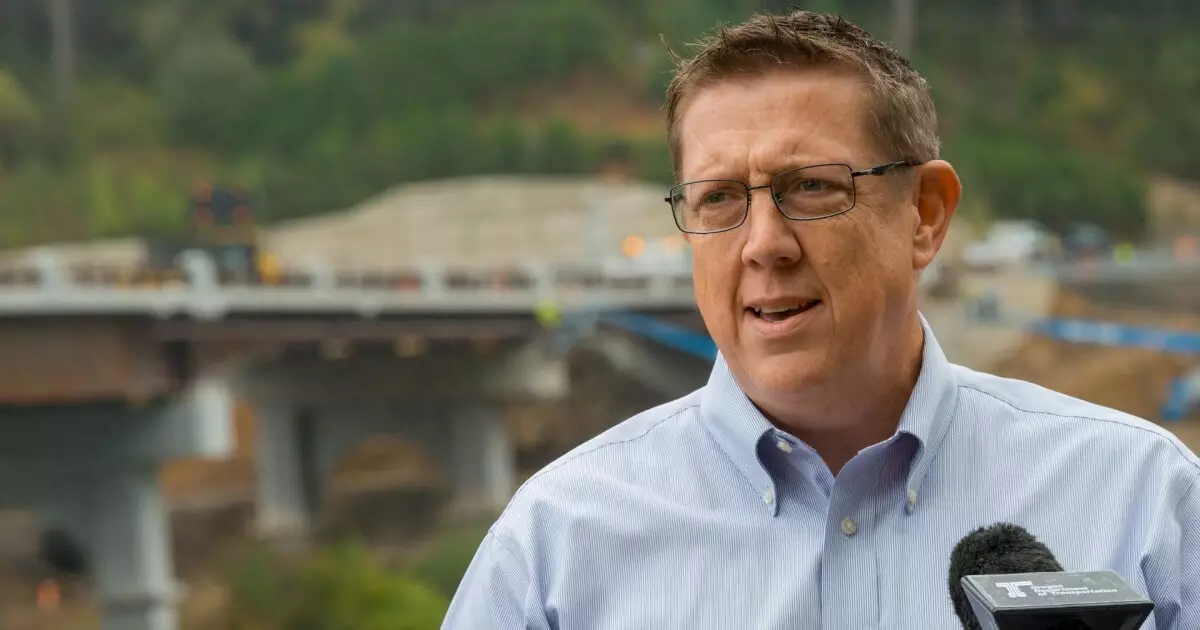The Critical Failure of Leadership: How Oregon’s Transportation Crisis May Erode the State’s Future

Oregon’s transportation system, a vital nerve for economic vitality and community well-being, teeters on the brink of collapse—not because of natural disasters or unforeseen crises, but due to a glaring failure of political will and leadership. For years, stakeholders, including the Oregon Department of Transportation (ODOT), have warned about the financial deterioration caused by stagnant revenue streams, inflation, and statutory restrictions. Yet, successive legislative bodies and the governor’s office have repeatedly fallen short, demonstrating a profound disconnect between urgent infrastructure needs and legislative priorities. This prolonged sticking point, culminating in this year’s legislative session, exposes a fundamental flaw: leadership that prioritizes short-term political gains over long-term stability.
By refusing to pass a comprehensive transportation funding package, lawmakers have forced ODOT into a nosedive of layoffs and service reductions. This is not just a bureaucratic inconvenience; it is a direct assault on the backbone of Oregon’s economy and quality of life. Every delay, every missed opportunity to patch the funds, weakens the very infrastructure that sustains commerce, safety, and daily life for millions. It is a stark example of political paralysis, fueled by partisan wrangling and the inability to forge consensus. The cost is painfully tangible: roughly 700 workers face layoffs, many of whom have dedicated years to maintaining Oregon’s roads, bridges, and transit systems, all while budget cuts accumulated over multiple biennia have sapped resources and morale.
The Economic and Social Toll of Budget Neglect
The consequences extend beyond mere staffing numbers. Transportation is the lifeblood of economic activity in Oregon, a state whose industries rely on effective logistics and reliable infrastructure. The failure to pass extensive funding isn’t just an abstract policy lapse; it translates into crumbling roads, delayed repairs, and a degraded transit system—factors that threaten economic competitiveness and public safety. When workers are laid off, the ripple effects ripple outward: contractors, small business suppliers, and local communities suffer from reduced activity, further contracting an already strained economy.
Moreover, the social fabric of Oregon’s communities faces erosion. Transportation is often a lifeline for the elderly, low-income families, and rural residents who depend on dependable transit for access to healthcare, education, and employment. Cutting jobs and scaling back maintenance will inevitably lead to increased congestion, longer commute times, and potentially catastrophic infrastructure failures. The risk of a degraded transportation network is more than inconvenience; it’s a threat to social equity, public health, and the state’s resilience in the face of future crises.
Leadership Failures and the Politicization of Critical Infrastructure
What makes Oregon’s predicament particularly disheartening is that it exposes a systemic failure at the level of governance. For over a year, ODOT leadership cautioned about the looming fiscal crisis, warning that without action, drastic cuts would become inevitable. Yet political leaders, divided along partisan lines, prioritized negotiation posturing over concrete solutions. The failure of the legislature to muster a three-fifths majority to pass HB 2025—an ambitious $14.6 billion funding plan—speaks volumes about the prioritization of political theater over practicality.
The governor’s office, despite acknowledging the crisis, has shown signs of indecision—mere hints at a potential special session, but no firm commitment. This ambiguity prolongs uncertainty and hampers strategic planning. Such a leadership vacuum fuels public frustration, erodes trust, and underscores a dangerous complacency amid looming infrastructure failures. It’s evident that Oregon’s political system, designed to represent diverse interests, has become gridlocked, unable or unwilling to prioritize the critical needs that underpin the state’s future prosperity.
The Urgency of Pragmatic Leadership and Future Risks
In the center-right wing of political ideology, there’s a firm belief in pragmatic governance—prioritizing solutions that balance fiscal responsibility with the necessity of maintaining critical services. The Oregon crisis demands a similar approach. While resistance to tax increases and government spending can be politically motivated, in this context, it reflects shortsightedness. The state’s current revenue model, heavily reliant on gas taxes and trucking fees, has proven unsustainable amid declining vehicle miles traveled and inflationary pressures.
A pragmatic leader would recognize the imperative of broadening the state’s revenue base while implementing efficiency measures. ODOT’s commitment to cutting vacant positions and non-essential spending is a necessary but insufficient strategy. Without reliable funding, the state risks slipping into a cycle of deterioration that will only become more expensive to repair. Future generations face a heightened risk of infrastructural collapse if elected officials fail to act decisively now. This crisis lays bare the urgent need for leaders to step beyond partisan obstructionism and embrace solutions that safeguard Oregon’s economic and social stability.
The Political Class’s Responsibility in Addressing the Crisis
The failure to pass a comprehensive transportation package is emblematic of a broader failure among Oregon’s political elite. The decision to leave behind critical infrastructure needs in favor of political posturing is a betrayal of public trust and a dereliction of responsibility. Leaders must be held accountable for prioritizing next election cycles over the long-term health of Oregon’s infrastructure.
This is a critical juncture where leadership must transcend petty politics. A forward-thinking approach would entail bipartisan negotiations, innovative funding strategies, and a recognition that investing in infrastructure is investing in the state’s future. The current deadlock signals that the political class is either unwilling or incapable of addressing these urgent needs, a situation that compels voters and stakeholders to scrutinize their representatives more critically and demand a change in priorities.
Oregon’s transportation crisis underscores a fundamental truth: neglect and political paralysis cannot be continued without severe societal costs. The state faces a stark choice—break the cycle of inaction, accept prudent, balanced reforms, or watch its future infrastructure crumble under the weight of political inertia. Leadership must be redefined—not as the pursuit of short-term gains but as the unwavering commitment to resilience and sustainable growth. Oregon’s prosperity depends on it.





